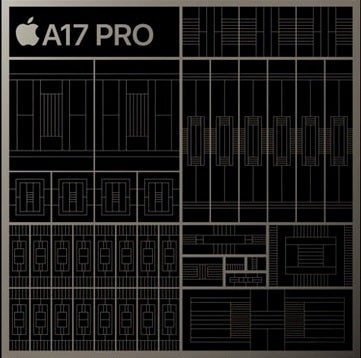Apple đang sử dụng chip-binning để tạo ra phiên bản khác của vi xử lý A17 Pro AP cho iPad mini mới
Apple có thể đã quyết định làm điều này vì một số lý do. Đó có thể là chip-binning, là quá trình tái sử dụng chip bị lỗi khi sản xuất. Thường thì, Apple có thể quyết định vứt bỏ bất kỳ chip lỗi nào mà có lõi không đáp ứng được yêu cầu hiệu suất tối đa cho iPhone. Với chip-binning, các lõi lỗi được tắt và vi xử lý được sử dụng với ít lõi hơn.

Hai phiên bản khác nhau của vi xử lý A17 Pro cung cấp sức mạnh cho dòng iPhone 15 Pro và mẫu iPad (A17 Pro). |-Cult of Mac
Vì vậy trong trường hợp này, với chip-binning, Apple sử dụng những vi xử lý bị lỗi ban đầu cho iPhone và biến chúng thành một biến thể của A17 Pro cho iPad mini mới mặc dù chỉ có một lõi GPU ít hơn. Điều này có thể đã giúp Apple tiết kiệm một số tiền; phiên bản của vi xử lý A17 Pro AP với GPU 5 lõi sẽ giúp Apple tiết kiệm chi phí sản xuất hàng loạt.
“iPad mini mới được cập nhật mạnh mẽ với vi xử lý A17 Pro, mang lại hiệu suất và hiệu quả điện năng tuyệt vời trong thiết kế siêu nhỏ gọn. A17 Pro là một vi xử lý mạnh mẽ, mở khóa nhiều cải tiến so với A15 Bionic trong thế hệ trước của iPad mini. Với một CPU 6 lõi – hai lõi hiệu suất và bốn lõi hiệu quả – A17 Pro mang lại một sự tăng 30% trong hiệu suất CPU.1 A17 Pro cũng mang lại một sự tăng trong hiệu suất đồ họa với một GPU 5 lõi, mang lại một sự tăng 25% so với thế hệ trước.” – Apple
Quan trọng là iPad mini (A17 Pro) của Apple sẽ được trang bị 8GB RAM, điều này có nghĩa là nó có thể hỗ trợ Apple Intelligence. Và có lẽ, người dùng iPad mini (A17 Pro) sẽ không nhận ra rằng vi xử lý A17 Pro AP chỉ có một lõi GPU ít hơn, thậm chí khi Apple có thể theo dõi tiền của mình đổ vào một cách linh hoạt hơn nhờ vào chiến lược sử dụng chip-binning giá rẻ.
Apple might have decided to do this for a couple of reasons. It might be chip-binning which is the repurposing of chips that were defective when produced. Normally, Apple might decide to toss in the trash any defective chips with cores that can’t meet the maximum performance requirements for the iPhone. With chip-binning, the defective cores are deactivated and the chipset is used with fewer cores.

Two different variants of the A17 Pro power the iPhone 15 Pro series and the iPad (A17 Pro) model. |-Cult of Mac
So in this case, with chip-binning, Apple takes what would have been defective chipsets for the iPhone and turns them into a variant of the A17 Pro for the new iPad mini albeit with one less GPU core. This might have had the added effect of saving Apple some money; the iteration of the A17 Pro AP with a 5-core GPU would cost Apple less money to mass produce.
“The new iPad mini gets a major update with A17 Pro, delivering incredible performance and power efficiency in an ultraportable design. A17 Pro is a powerful chip that unlocks a number of improvements over the A15 Bionic in the previous-generation iPad mini. With a 6-core CPU — two performance cores and four efficiency cores — A17 Pro delivers a 30 percent boost in CPU performance.1 A17 Pro also brings a boost in graphics performance with a 5-core GPU, delivering a 25 percent jump over the previous generation.”-Apple
What is important is that the Apple iPad mini (A17 Pro) will be equipped with 8GB of RAM which means that it can support Apple Intelligence. And most likely, iPad mini (A17 Pro) users will not notice that the A17 Pro AP has one less GPU core even as Apple is able to watch its coffers fill with more money thanks to its use of a less expensive chip-binning strategy.
[ad_2]


